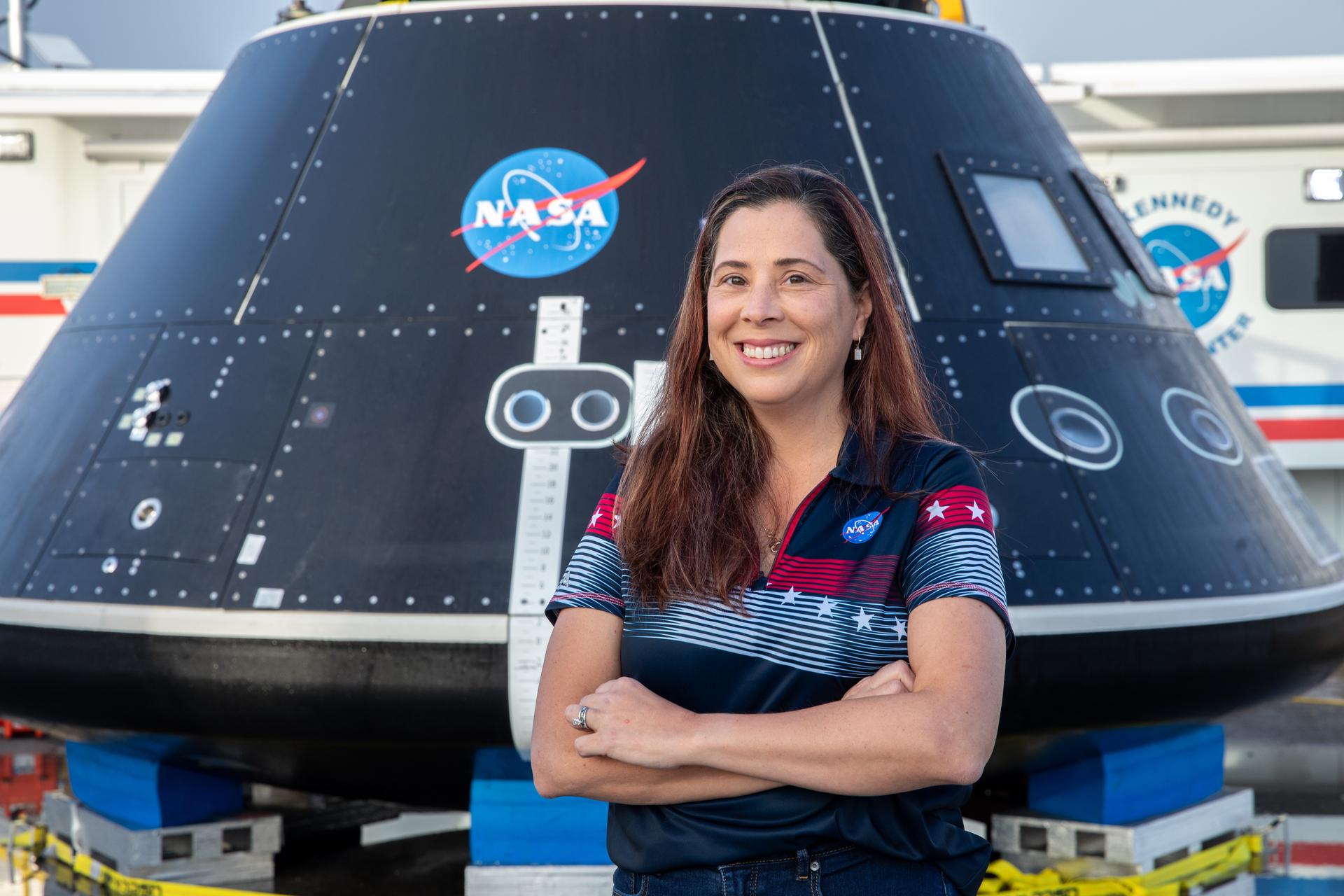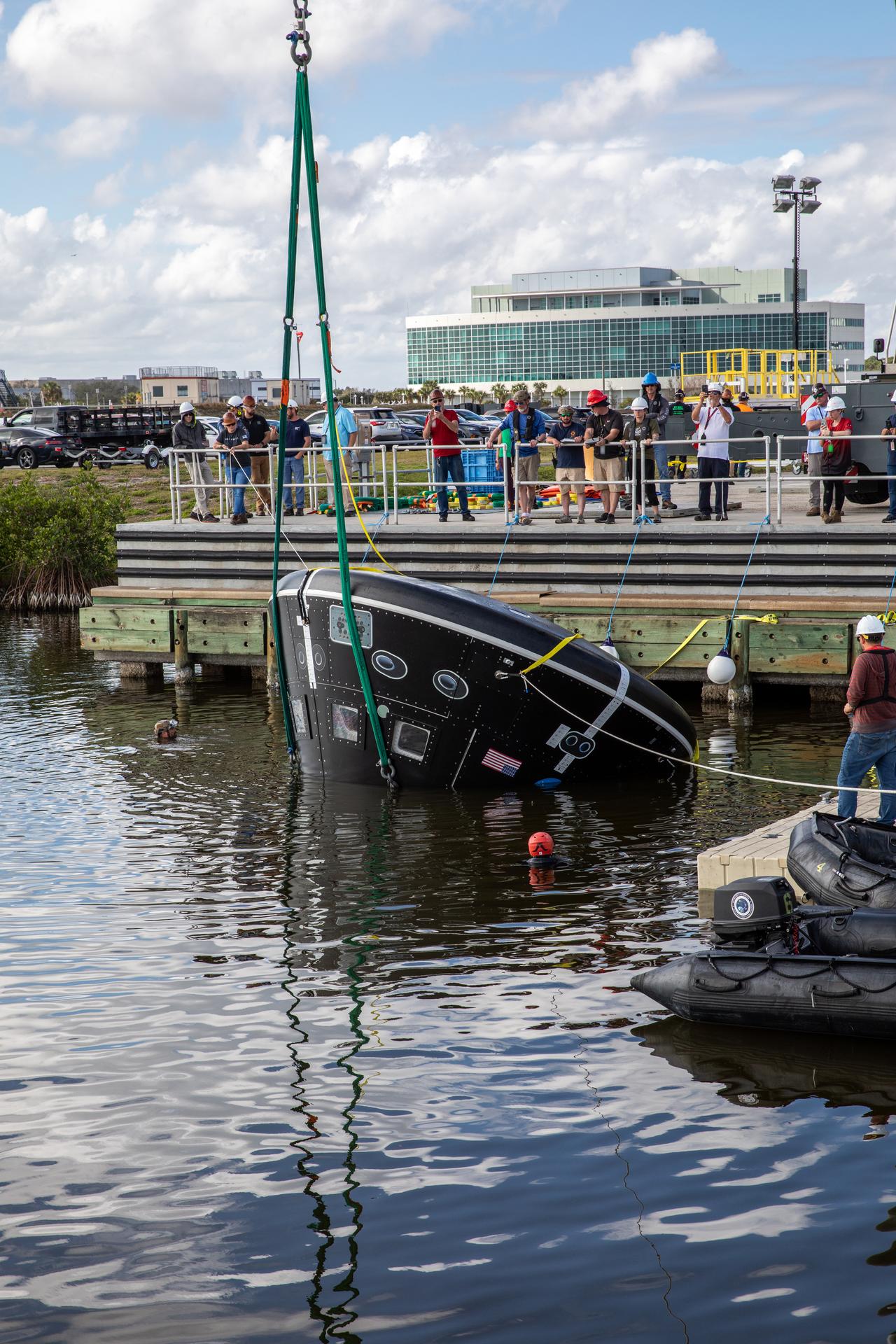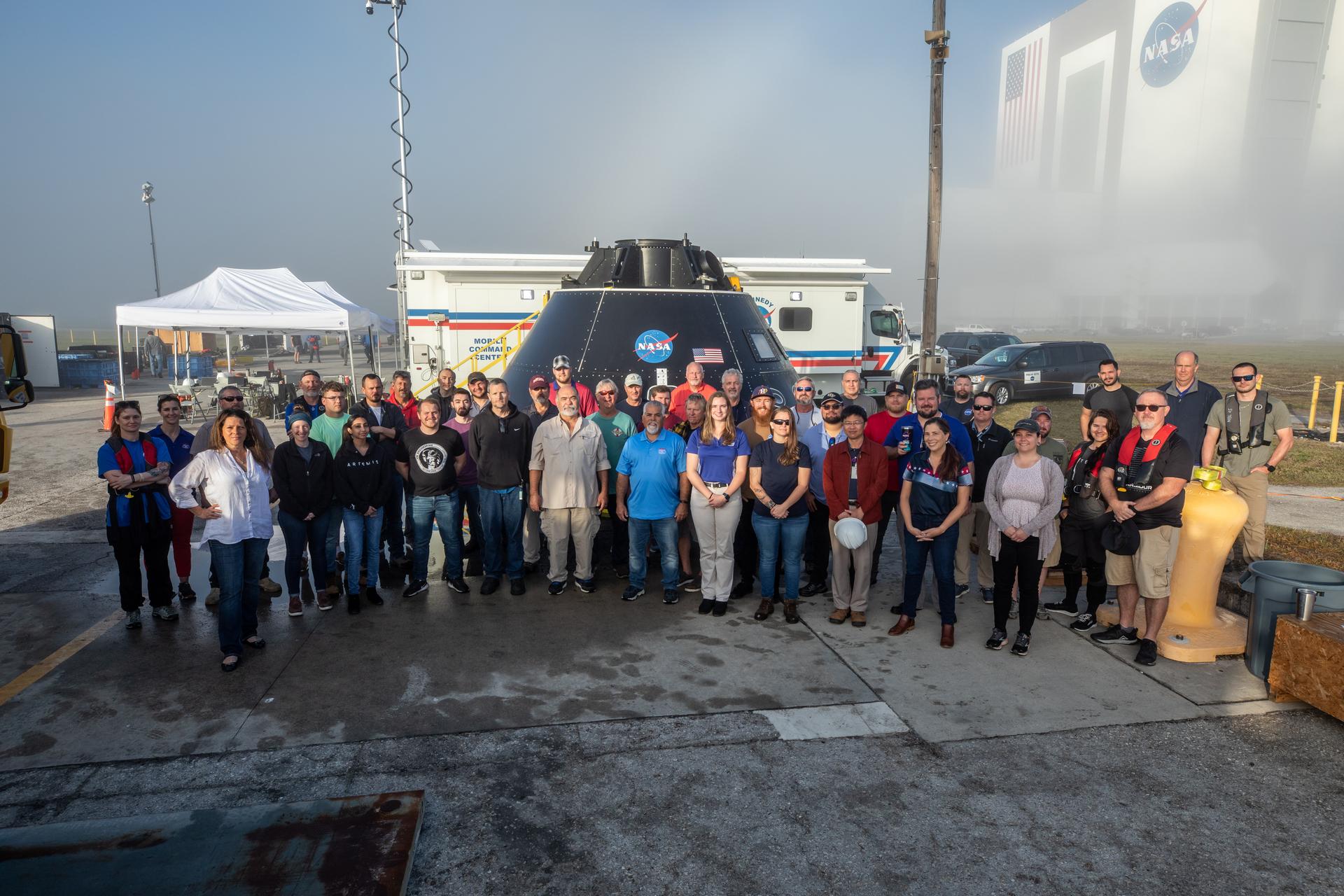
Leerlo en español aquí
By Antonia Jaramillo
NASA’s Kennedy Space Center
When Lili Villarreal was 7 years old, her family went to the Kennedy Space Center Visitor Complex in Florida. From that moment on, Villarreal was hooked on space exploration. Villareal recently was named NASA’s Artemis II landing and recovery director in the agency’s Exploration Ground Systems Program at the agency’s Kennedy Space Center, and is responsible for the effort to retrieve astronauts from the Orion spacecraft after it splashes down in the Pacific Ocean following its 10-day mission around the Moon.
“I did not know what space was until I came to the visitor center, and we got to look at all the rockets on display, got to look at a spacesuit that went to the Moon and I couldn’t believe that we, humanity, had achieved that,” Villarreal said. “And I said, ‘that’s it, that’s what I want do.’”
Originally from Cartagena, Colombia, Villareal and her family moved to Miami, Florida, when she was 10 years old. Since she eventually wanted to work in the space program, Villarreal pursued a Bachelor of Science and master’s degree in aerospace engineering from the Georgia Institute of Technology. Following graduation, she went to work for Boeing in Seattle, working on commercial aircraft before eventually moving south to work for NASA as a Boeing contractor.
Villarreal, who lives in Melbourne, Florida, with her husband and son, joined NASA in 2007. Prior to becoming landing and recovery director, Villareal served as the deputy flow director for the Artemis I mission, responsible for the integration, stacking, and testing of the Space Launch System rocket and Orion inside Kennedy’s Vehicle Assembly Building before engineers rolled them out to the launch pad.
“When they asked me to do the [landing and recovery director] job, I thought hard about it. I really wanted it because it’s an exciting and rewarding job, but also comes with significant responsibility. As the recovery director, you’re not just responsible for the safety of the crew, you’re also responsible for the safety of everybody who helps recover the crew,” Villarreal said.
During her NASA career, Villareal also worked in the operations division for the International Space Station program.

“I didn’t grow up with Apollo, but when I started working here, I had the opportunity to meet people who worked those missions, and you could just feel how proud they were to have been part of such an amazing thing for humanity,” Villarreal said. “I worked on the space station program for over 15 years. I was ready to come over and work on Artemis because I wanted to be part of the team that was returning humanity to the Moon and eventually to Mars. And I thought if I can somehow be a part of that, I wanted to do that.”
While teams with Exploration Ground Systems and the Department of Defense successfully recovered Orion following the Artemis I splashdown, there were no astronauts aboard the uncrewed flight test to allow engineers to understand the rocket and spacecraft system before flying astronauts to the Moon.
Between now and Artemis II, teams will rehearse all the steps and procedures to make sure they’re ready for crewed flights. This involves conducting several underway recovery tests where NASA and U.S. Navy teams will practice retrieving astronauts from a representative version of Orion at sea and bringing them – and Orion – back to the ship. Teams will also conduct tests at Kennedy.
“That’s my job – to train the different forces to be able to recover the crew,” Villarreal said. “We have to recover the crew in the open ocean within two hours of splashdown before bringing the capsule inside the well deck.”


























